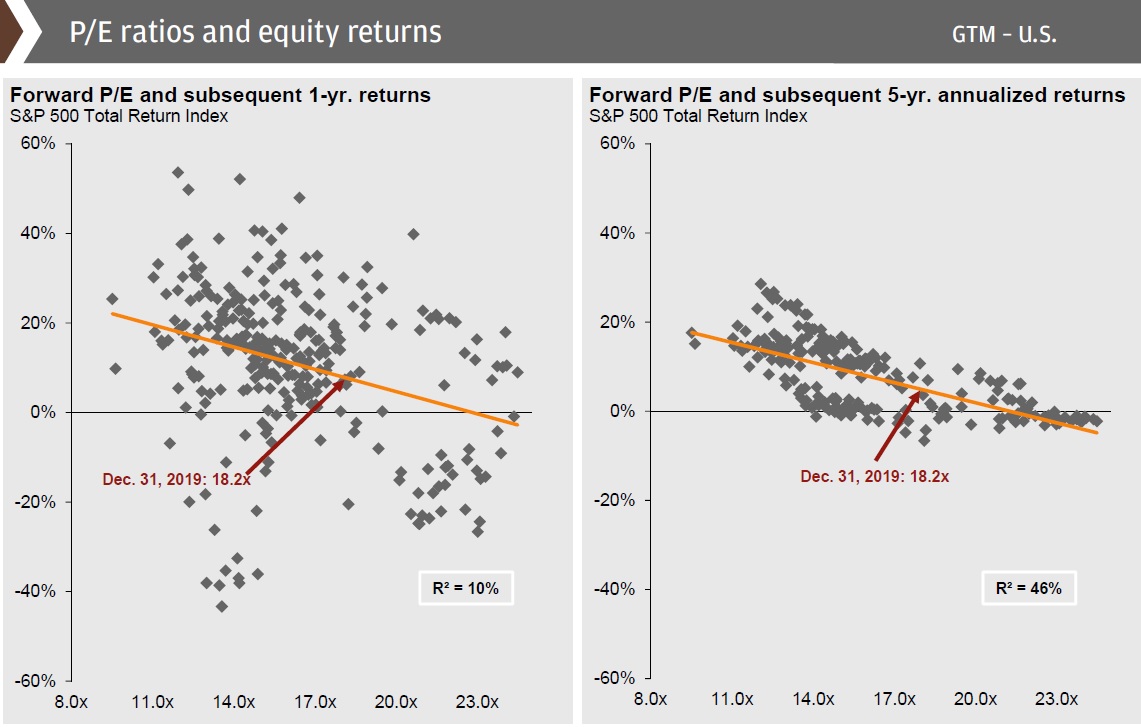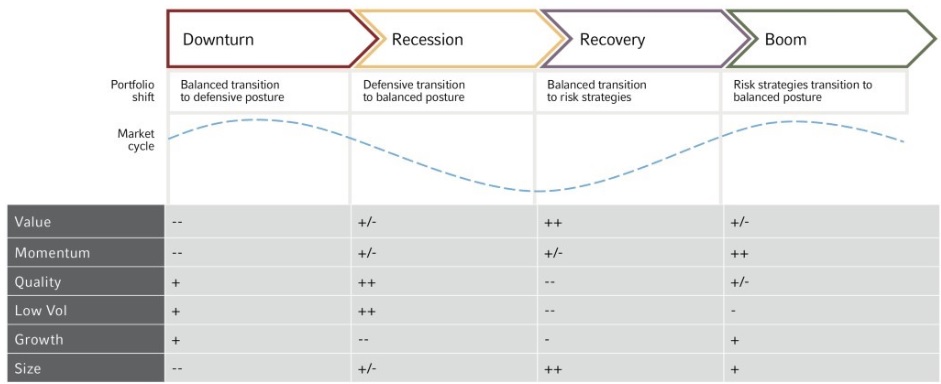Welcome to a new year and a new decade!
Before we begin, we would like to extend our sincere wishes for a happy new year to you and your family. We would also like to thank to you for your continued trust in us and for the opportunity to assist you in working toward your financial goals. Should you have any questions about your investments or the market outlook for the coming year, please remember that we are just a phone call or e-mail away.
The last 10 years saw unprecedented change in the wealth management industry. Investors and advisors had to quickly adapt to new products, more regulation, and improved technology. We wish to highlight four major themes in our industry that will contrast this decade with the last one.
1. Returns will likely be lower, but still positive
In 2010, Canadian and U.S. stock markets were just starting to rebound from the lows of the financial crisis. Today, these markets are at records highs and most market observers predict that returns for the next decade will not be as strong. Blackrock, one of the world’s largest assets managers, projects a return of 4% for a balanced portfolio in the 2020s, compared to 7% for the 2010s.
This news should not come as a major surprise. Let’s look at the price/earnings (P/E) ratio, which is the most common metric for valuating stocks and markets. A P/E of 10 means the stock price is trading at 10 times the company’s annual earnings per share. The 25-year P/E average for the S&P 500 is about 16x earnings. In January 2010, the S&P 500 traded at 14x earnings and at the bottom of the financial crisis it traded at 9x.
Today, it is currently trading at around 18x earnings.
The chart below tracks the relationship between P/E ratios and historical 5-year rates of return. Simply put, the higher the valuation, the lower the projected 5 or even 10-year return. At current valuations, history suggests a 5-year annualized return of 5.3% for the S&P 500.

2. Investors will pay lower fees for their investments
A positive theme for the next decade is that investors will pay less fees than ever before.
The Management Expense Ratio (MER) is the total amount of fees investors pay to the fund manager (RBC, CI, BMO, Fidelity, etc.) and to the advisor. When I started working at You First in 2009, the MER for a growth-oriented portfolio was approximately 2.5% or more. With a 2.5% MER, a mutual fund whose basket of stocks returns 9% for the year results in an after-fee return of 6.5% to the investor.
Thankfully, due to increased regulation and fiercer competition, fees have come down substantially. Today, MERs are commonly between 1.2% to 2.2% or 0.9% to 1.9% for higher net worth investors. Using the same example as above, a mutual fund whose basket of stocks returns 9% now results in a return of between 7% and 8% to the investor.
3. A multi-factor strategy will be incorporated to portfolio construction
Today, most industries offer more diverse and customized product options than ever before. The investment industry is no different.
An investment trend that has already started – but will likely grow in popularity in the next few years – is the multi-factor portfolio. In addition to well–known factors such market cap, value or dividend, there are now investment funds with volatility, quality and momentum factors built in.
These additional factors will increase customization and risk-management in a portfolio and facilitate an advisor’s ability to tie investments to market cycles.

For even further diversification and customization, portfolios will also be built with a mix of passive and active mandates. Passive investments aim to mimic the holdings and returns of a certain index (like the TSX or S&P 500) and are known for their low fees. Active funds are the mutual funds we are most familiar with. These are run by a portfolio manager and aim to meet or exceed the return of their respective benchmark index and whose holdings may look very different than the index. Incorporating both passive and active investments in a portfolio has the potential to increase diversification and lower risk.
4. Technology will improve the user experience
In the last several years, our dealership has launched the following initiatives:
- Nominee accounts that simplify administration for switches, transfers, redemptions and purchases
- The ability to self-fund your account by making a bill payment in online banking
- Improvements to the Wealthview online portal
- Consenting electronically (digital signatures) to account changes
These measures are aimed to simplify, automate, or accelerate a client’s ability to transact on their accounts. The next decade will build on these ideas and see more innovations aimed toward improving the client experience while streamlining administration.
Sources: Blackrock, J.P. Morgan, Fidelity
This information is provided for general information purposes only. It does not constitute professional advice. Please contact a professional about your specific needs before taking any action.
